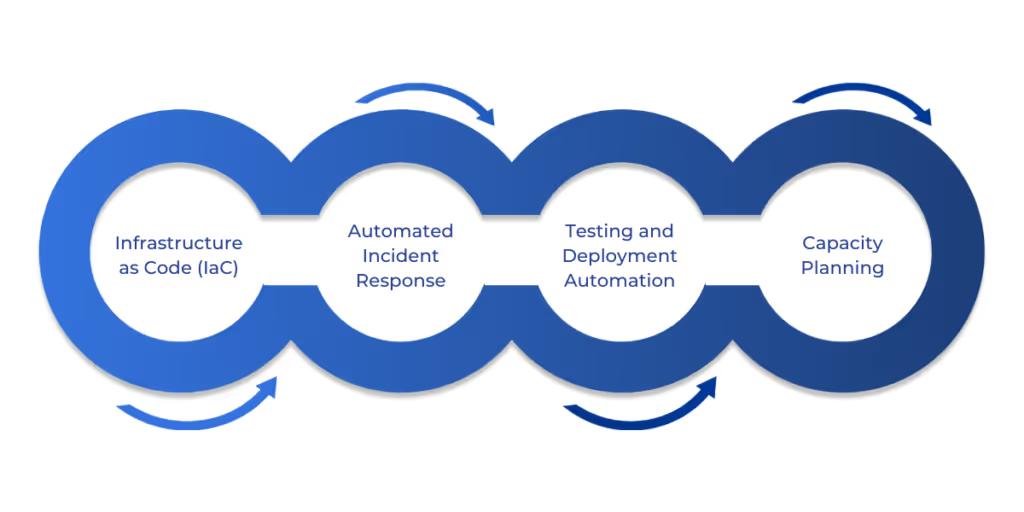

According to Acronis report, in 2021, 76% of businesses lost data due to downtime. This statistic reflects a harsh reality—unplanned disruptions are not rare occurrences but persistent threats that can impact organizations of all sizes. As businesses rely more on digital infrastructure, the stakes of system failures continue to rise.
The demand for reliability has never been greater. Whether it's cloud services, e-commerce platforms, or enterprise applications, companies need systems that can withstand pressure and recover quickly when issues arise. Ensuring this level of resilience requires a specialized approach—one that goes beyond traditional IT operations.
This is where Site Reliability Engineers (SREs) come in. This role has now become a fundamental part of modern infrastructure. In this blog, we will explore the ins and outs of the SRE profession. We'll dive deep into their responsibilities, required skills, cultural impact, automation strategies, and essential tools.
A Site Reliability Engineer (SRE) is a specialized role that blends software engineering with IT operations to enhance the reliability, scalability, and efficiency of systems. The SRE job role was first introduced by Google as a solution to bridge the gap between development and operations teams, creating a more streamlined and automated approach to maintaining infrastructure.
SREs apply software engineering principles to solve operational challenges, focusing on automation, performance tuning, and proactive monitoring. Their primary objective is to build self-healing and fault-tolerant systems that minimize human intervention, allowing businesses to scale without compromising reliability.
The growing reliance on complex digital systems has made Site Reliability Engineering (SRE) skills indispensable. In an IT ecosystem, digital services are integral to daily operations, system reliability is no longer a secondary concern—it is a critical business requirement.
Customers and businesses today expect digital services to be fast, reliable, and always accessible. Even brief disruptions can have serious consequences, affecting brand reputation, revenue, and customer loyalty. The impact varies across industries, as seen in these examples:
To meet these high expectations, businesses must take a proactive approach to reliability, going beyond reactive fixes to build self-healing systems. This is where SREs take over to keep digital services running smoothly. They ensure seamless operations and high performance by implementing the following strategies:
By integrating observability and incident management frameworks, Site reliability engineers play a vital role in delivering high-availability services. Their expertise ensures organizations can meet customer expectations while maintaining operational stability and scalability.
A robust understanding of the SRE job role is essential for businesses looking to build resilient systems. Here, we’ll explore the core responsibilities that define this crucial profession.
As businesses grow increasingly reliant on digital services, ensuring system reliability has become a critical priority. Site Reliability Engineers’ role is not limited to incident resolution—they proactively build infrastructure that prevents failures, optimizes performance, and enhances functionality.
Here are the Key Responsibilities of an SRE:
The responsibilities of an SRE go beyond maintaining system uptime; they drive long-term improvements that shape the reliability and efficiency of digital infrastructure. By balancing automation and incident response, SREs create sustainable solutions that support business growth.
However, achieving system reliability is not just a technical challenge—it requires a cultural shift within organizations. Effective collaboration between development, operations, and security teams is essential to building a shared responsibility model for reliability. In the next section, we’ll explore how SREs contribute to fostering this collaborative culture.
Traditional IT and development teams often operate in silos, leading to inefficiencies, misaligned priorities, and slower incident resolution. SREs break down these barriers by establishing a shared responsibility model where reliability is not the concern of just one team but an organizational priority.
Organizations that successfully adopt SRE principles cultivate a culture of shared responsibility, where developers and operations teams work in tandem rather than in silos.
This cultural shift involves:
By embedding these cultural practices into daily operations, organizations can build resilient teams that prioritize reliability without sacrificing innovation. However, effective collaboration is only possible when SREs possess the right mix of technical expertise and problem-solving skills.
Further, we’ll explore the core competencies required to succeed in an SRE job role and how they contribute to long-term system stability.
Excelling in an SRE job role isn't just about knowing the right tools—it's about thinking ahead, reducing manual effort, and designing systems that can adapt to real-world challenges. Whether it’s managing deployments, fine-tuning infrastructure, or preventing outages before they happen, the best SREs combine technical expertise with a proactive approach to reliability.
Key Competencies for SREs:
A skill set that blends deep technical knowledge with a problem-solving mindset, allows anticipation of failures to streamline operations and optimize performance. As companies scale, automation becomes a key part of keeping systems efficient and reliable.
In the next section, we’ll look at how automation shapes modern SRE workflows and why it’s central to keeping businesses online.

Automation is at the heart of the SRE job role. It reduces toil, enhances scalability, and ensures consistency in operations.
Following are the key areas where SREs apply automation:
By eliminating manual interventions, organizations can shift their focus toward innovation, optimizing infrastructure, and enhancing user experiences. As businesses continue to scale, the role of Site Reliability Engineers (SREs) becomes even more critical in maintaining this balance.
The increasing demand for skilled SREs is reflected in competitive salaries, with compensation varying based on experience, industry, and location. Next, we’ll explore salary trends for SREs and the key factors influencing their earning potential.
With the rapid expansion of cloud computing and automation, the SRE job role has secured a spot in LinkedIn’s Jobs on the Rise Report for 2025. With increasing reliance on cloud computing, automation, and large-scale infrastructure, organizations are offering competitive salaries to attract top SRE talent.
Here are the average SRE salaries in the U.S. (2025)
Key Factors Affecting SRE Salaries
Compensation for SREs varies based on company size and industry, experience, and location, with major tech hubs offering significantly higher salaries.
Here’s the breakdown:
As businesses scale their digital operations, the role of an SRE becomes more critical, directly influencing system reliability and performance. Salaries reflect this importance, rewarding professionals who can bridge the gap between development and operations while ensuring system uptime.
Site Reliability Engineering has become a cornerstone of modern IT infrastructure, ensuring that systems remain stable, scalable, and efficient. Success in this field requires a balance of technical expertise, automation, and a proactive approach to minimizing downtime. With the right tools and strategies, SREs can build resilient systems that support business growth and deliver seamless user experiences.
Looking for a solution to level up your SRE practices? WaferWire can help. Providing automatic and intelligent observability for even the most complex distributed cloud environments, WaferWire empowers businesses with real-time monitoring and end-to-end automation, helping SRE and DevOps teams enhance system reliability and performance.
Leveraging Azure Kubernetes Service (AKS) for containerized workloads and Azure Traffic Manager for global load balancing, we enable seamless scalability and resilience.
Upgrade your SRE practices today with WaferWire’s intelligent solutions!

